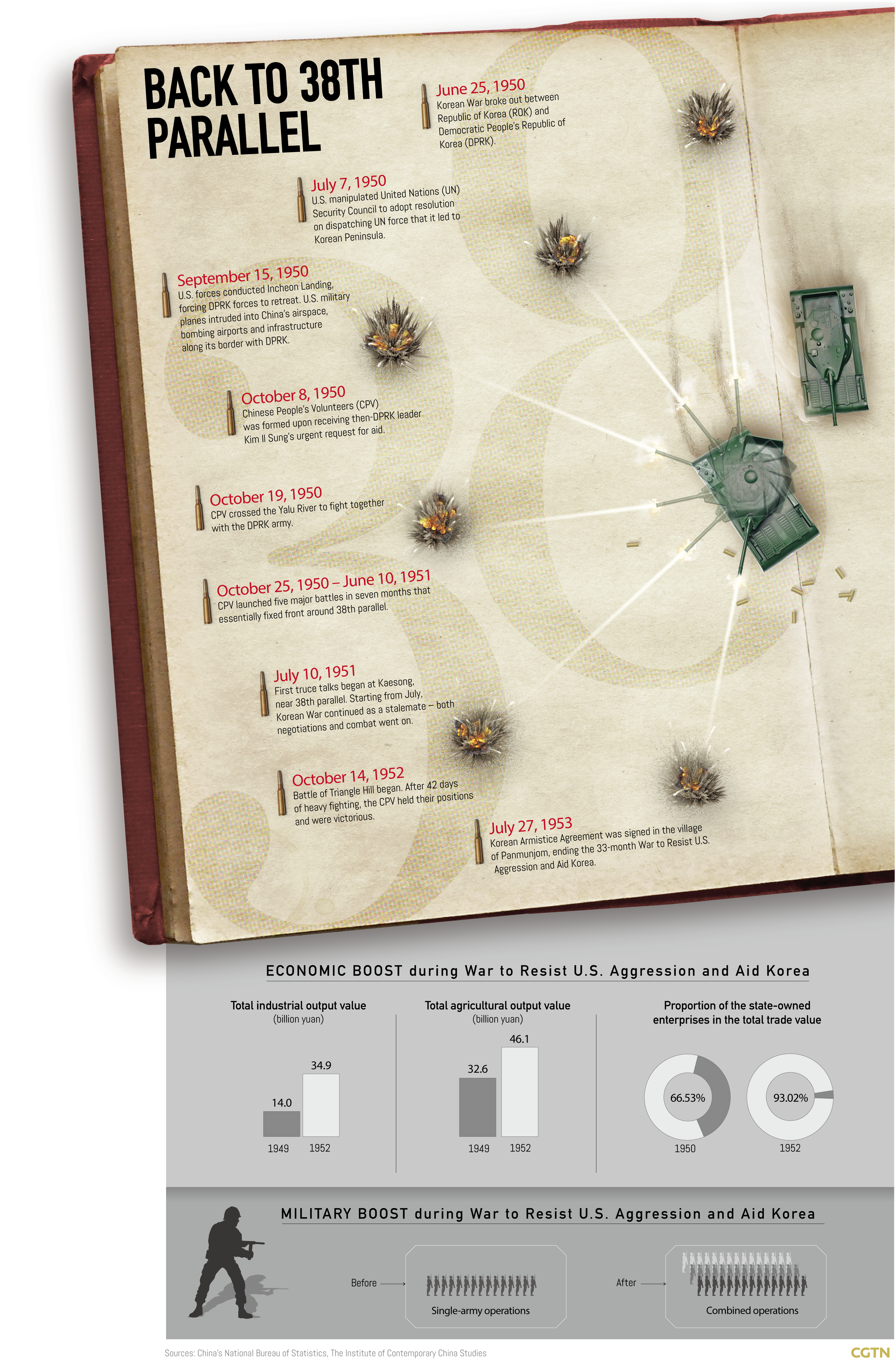
This year marks the 70th anniversary of the victory in the War to Resist U.S. Aggression and Aid Korea. Seventy years ago today, the Korean Armistice Agreement was signed in the village of Panmunjom.
The War to Resist U.S. Aggression and Aid Korea started at the 38th parallel north.
On June 25, 1950, the Korean War broke out between the Republic of Korea (ROK) and the Democratic People's Republic of Korea (DPRK).
The U.S. mobilized a third of its army, half of its navy and a fifth of its air force to join the war. Its peak troop strength topped 300,000.
On September 15, the U.S. forces conducted the Incheon Landing, forcing the DPRK forces to retreat. Meanwhile, U.S. military planes intruded into China's airspace, bombing airports and infrastructure along its border with the DPRK.
On October 8, the Chinese People's Volunteers (CPV) was formed upon receiving then-DPRK leader Kim Il Sung's urgent request for aid, and the CPV crossed the Yalu River to fight together with the DPRK army on October 19.
Up until June 1951, the CPV launched five major battles in seven months that inflicted heavy losses on the UN force led by the U.S. and essentially fixed the front around the 38th parallel.
For the next two years, the Korean War continued as a stalemate – both negotiations and combat went on.
On July 27, 1953, the Korean Armistice Agreement was signed in the village of Panmunjom, ending the 33-month War to Resist U.S. Aggression and Aid Korea.
According to China's official release, the proportion of national defense expenditures in the country's financial expenditures increased considerably during the war. However, despite the increase in defense spending, the Chinese government maintained its focus on domestic economic development and achieved economic boost.
By the end of 1952, the national economy had largely grown. The country's total industrial and agricultural output value was 81 billion yuan, an increase of over 30 billion yuan over 1949. The industrial output value and agricultural output value reached 34.9 billion yuan and 46.1 billion yuan, respectively.
From a military point of view, China's army has also greatly improved its equipment and strength and has realized a shift from single-army operations to combined operations. Diplomatically, the victory of the war built a solid foundation for China's important status in Asia and worldwide and demonstrated the Chinese people's resolve to safeguard world peace.
Data editor: Sun Yiwen
Graphics designer: Mukesh Mohanan









